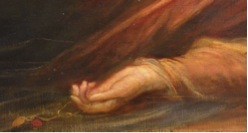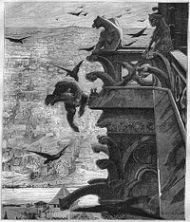Mrs. Warren’s Profession, a play by Bernard Shaw, was written in 1894. In this play Shaw challenged the social stigmas that existed during the time and gets at Shaw’s desire for social reformation. Shaw critiques the capitalist system and blames the rise of prostitution and similar “lifestyles” on capitalism, showing that the middle-lower classes do not benefit from capitalism and must resort to such professions that disregard dignity and morality.
During the time in which Shaw’s work was produced women were expected to act and be of a certain way. Both Vivie and Mrs. Warren fall outside the lines of conventionality. As Mr. Praed points out Vivie is “conventionally unconventional” Vivie can be described as such because she is an educated woman who is very forward with actions and speaking. Vivie also rejects to marriage proposals during the play, which during Victorian times would be unheard of, because that is considered rejecting the role of the woman. Along the same lines her mother, Mrs. Warren depicts a person who has been forced to become a prostitute and now run multiple brothels, that is her profession. This play show the struggle between individuals, such as Mrs. Warren trying to gain respect from her daughter, and it also shows the struggles these individuals have because of the society they live in and the social classes they belong to.
The play goes to the core of Victorian society and does a good job commenting on it. It shows the product of capitalism and uses Vivie to represent a gender reformation, as a character who is defying the Victorian expectation of a woman.
Linked here is a YouTube video of the play it is not of the greatest quality however I found it much more enjoyable and easier to understand when I could see and hear it.
http://www.youtube.com/watch?v=TuSLuQVBma4
Shortly after this time (1899) a book was published in the United States the parallels some of the ideas presented in “Mrs. Warren’s Profession”. The Awakening a novel by Kate Chopin shows strong female characters. Specifically Edna, it is her awakening that is witnessed in the novel and it is through this work that Chopin presents a commentary on the current structure of society in the southern United States. The Novel shows a sexual female character that is fighting against the norms of society and redefining gender roles, such as Vivie is seen doing in “Mrs. Warren’s Profession”
Both of these works were not originally well received by their societies but as time went forward and the societies began to change and adapt the works were more welcome and today they are revered as great books of their time.



